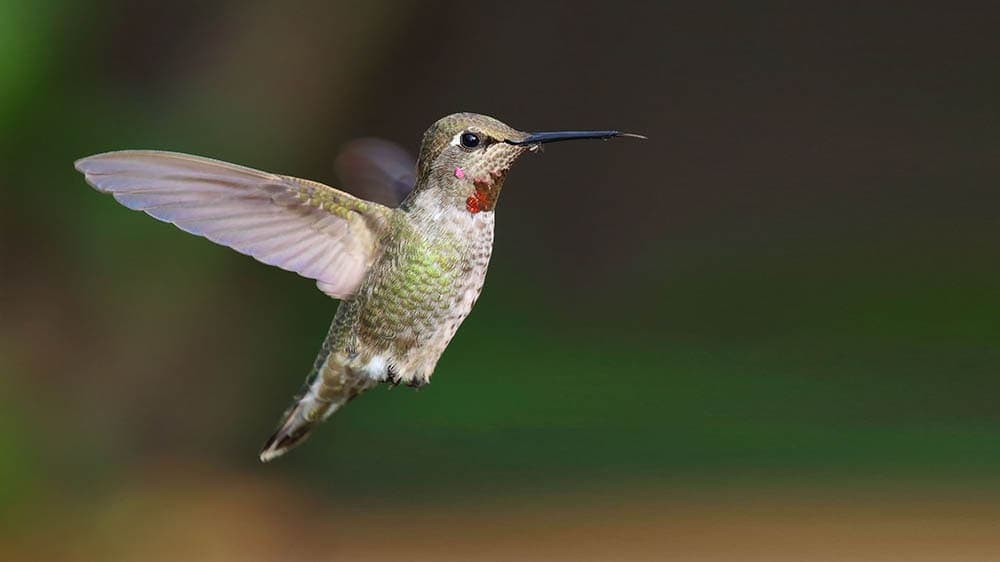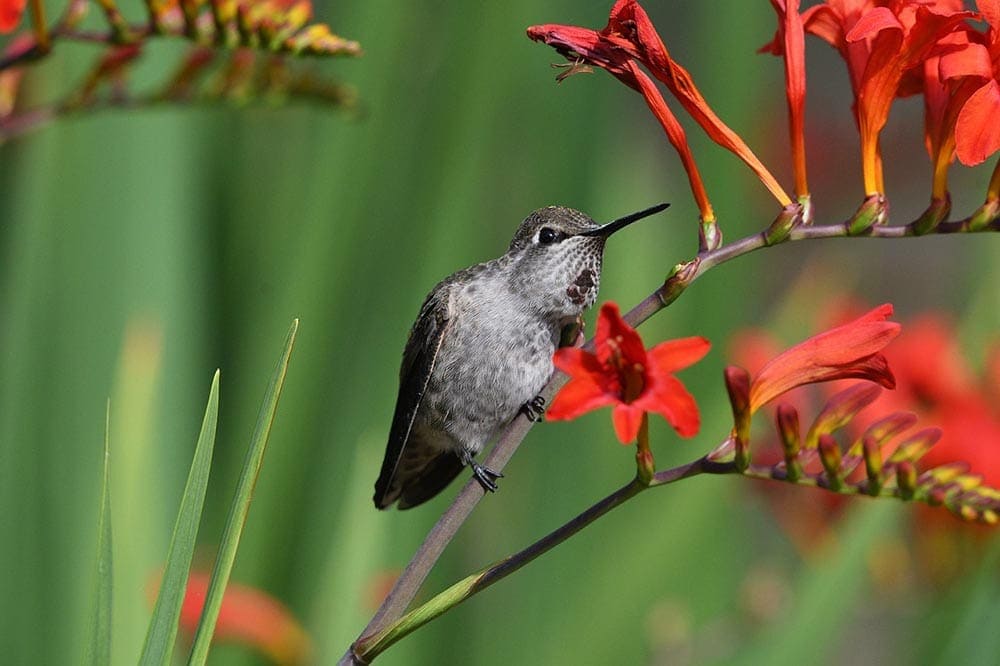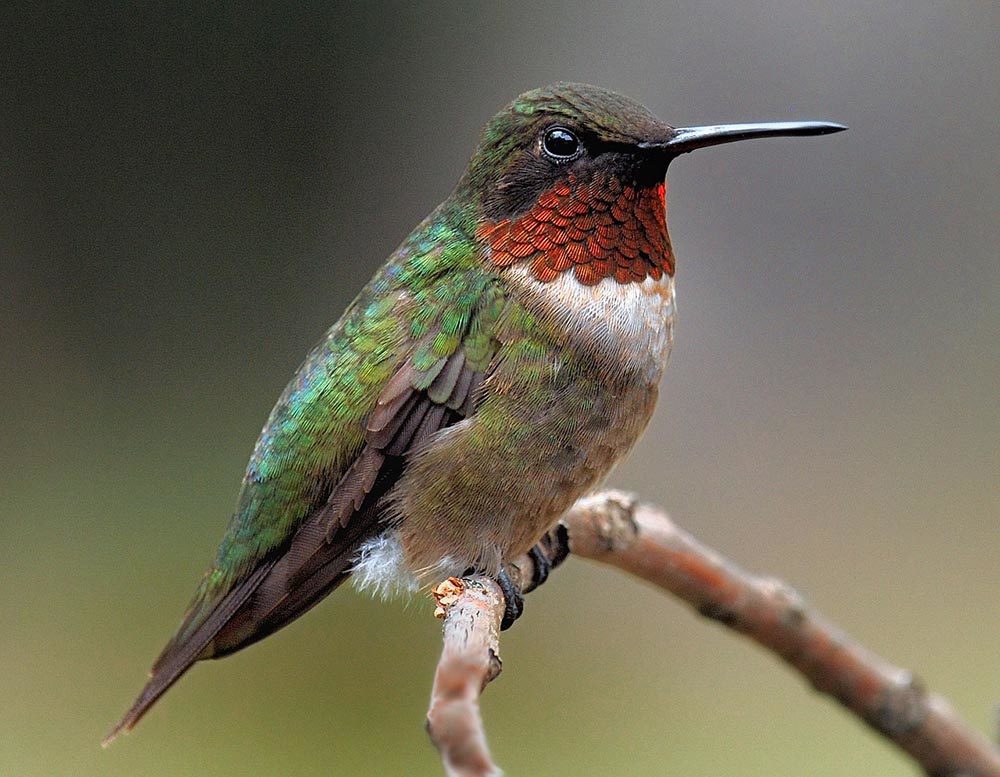Do Hummingbirds Have Feet? What You Need To Know!
Last Updated on

Hummingbirds are lovely birds that are a joy to watch flitting around flowers and feeders. If you’ve only seen hummingbirds quickly in passing, then you may have found yourself wondering if they ever take a break. They’re such fast flyers that seem to never stop moving. But have you ever wondered if hummingbirds even have feet to land on? It might sound like a bizarre question to ask yourself, but if all of your experiences with hummingbirds have been watching them in flight, then it could be a little surprising to learn that hummingbirds have feet!

Do Hummingbirds Have Feet?
Yes, hummingbirds do have feet! If you’ve had the pleasure of watching hummingbirds hovering around a hummingbird feeder, then you’ve likely seen a hummingbird’s tiny feet. They use their feet to perch on branches and feeders, allowing them to take a break. They also use their feet for nest building and grasping other items.
Even though it might sound like a silly question to some people, there is a solid reason that you might have thought that hummingbirds don’t have feet. Hummingbirds belong to the order Apodiformes, which is the Latin word for “footless”. This name likely comes from how small their feet are and how hidden they are when not in use. Hummingbirds are one of the three living Apodiformes families, along with swifts and treeswifts.

Why Do Hummingbirds Need Feet?
It’s surprisingly important for hummingbirds to be able to perch because they require an enormous amount of energy to maintain normal body function and metabolism, which is why they require so much nectar. If a hummingbird never stopped flying, it would never be able to rest due to the constant need for food. This would be difficult to achieve, especially considering the number of flowers that close at night, which is the primary source of food for most hummingbirds.
To maintain their energy stores overnight, hummingbirds need to be able to rest. They do more than sleep, though. At night, hummingbirds enter into a semi-hibernation state called “torpor”. Torpor allows the body’s metabolic functions to drop to minimal levels, ensuring the body doesn’t burn all of its energy stores overnight when the hummingbird is not able to eat.
Can Hummingbirds Walk?
Hummingbirds can walk but their legs are not built for walking or hopping, so they are not very functional for these purposes. Part of the lack of functionality is due to the size ratio of the hummingbird’s body to its legs and feet, which are small and stubby by comparison. The other reason hummingbirds have difficulty walking or hopping is because they lack knees, so the mobility of the legs and feet is relatively confined to the joints within the feet and the pelvis.


Conclusion
It may not be the most surprising thing you’ve ever heard to find out that hummingbirds do have feet. After all, most animals have feet of some sort. However, hummingbirds’ feet have limited functionality, essentially only serving to allow hummingbirds to rest. Hummingbirds make up for their limited foot and leg functionality in their flying skills, though. Hummingbirds are one of the most agile birds and although they’re small, they’re fierce birds that can outmaneuver most threats. They are known for their aerial dogfights with each other to protect their territory, young, and food.
Featured Image Credit: Ercan-uc, Shutterstock
About the Author Brooke Billingsley
Brooke Billingsley spent nine years as a veterinary assistant before becoming a human nurse in 2013, but she still loves all animals! She currently shares a home with three dogs, two cats, five fish, and two snails. She has a soft spot for special needs animals and has a three-legged senior dog and an internet-famous cat with acromegaly and cerebellar hypoplasia. Brooke hosts a podcast focusing on folklore and myth and loves spending her free time researching and writing. Brooke believes that every day is an opportunity for learning and growth and she spends time daily working toward new skills and knowledge.
Related Articles:
Can You Use Binoculars to Look At Stars? How to Choose the Right Pair
How to Clean a Refractor Telescope: Step-by-Step Guide
How to Clean a Telescope Eyepiece: Step-by-Step Guide
How to Clean a Rifle Scope: 8 Expert Tips
Monocular vs Telescope: Differences Explained (With Pictures)
What Is a Monocular Used For? 8 Common Functions
How to Clean a Telescope Mirror: 8 Expert Tips
Brightfield vs Phase Contrast Microscopy: The Differences Explained
